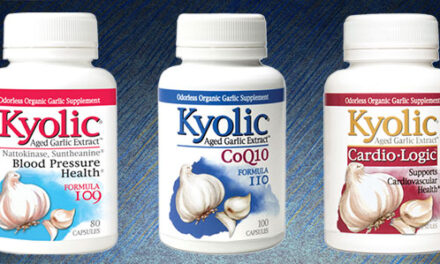What are they?
The water-soluble B vitamins are collectively referred to as “B-Complex.” They include thiamine (B1), riboflavin (B2), niacin or niacinamide (B3), pyridoxine (B6), folic acid, vitamin B12 (cyanocobalamin or methylcobalamin), biotin and pantothenic acid (B5). In addition, choline, inositol and PABA (paraaminobenzoic acid) are compounds that are not technically B vitamins but which have related functions and so are often included with B-Complex products.
B vitamins are found in whole unprocessed foods. Processed carbohydrates such as sugar and white flour tend to have lower B vitamins than their unprocessed counterparts. B vitamins are particularly concentrated in meat such as turkey and tuna, in liver and meat products. Other good sources for B vitamins include kombucha, whole grains, potatoes, bananas, lentils, chili peppers, tempeh, beans, nutritional yeast, brewer’s yeast, and molasses.1
What Does It Do?
Each of the B vitamins has their own functions to serve in the body, but in general they may be considered to play a role in energy metabolism and helping to promote homeostasis when the body is under stress. The use of the entire B-Complex is recommended since the individual B vitamins affect one another’s absorption, metabolism, and excretion.2
B-Complex And Energy
Each of the B vitamins is converted into coenzymes in the body. These B vitamin coenzymes are involved, directly or indirectly in energy metabolism. Some are facilitators of the energy-releasing reactions themselves within the mitochondria; others help build new cells to deliver the oxygen and nutrients that permit the energy pathways to run. Thiamin is essential for the oxidative decarboxylation of the multi-enzyme branched-chain keto-acid dehydrogenase complexes of the citric acid cycle. Riboflavin is required for the flavoenzymes of the respiratory chain, while NADH is synthesized from niacin and is required to supply protons for oxidative phosphorylation. Pantothenic acid is required for coenzyme A formation and is also essential for alphaketoglutarate and pyruvate dehydrogenase complexes as well as fatty acid oxidation. Biotin is the coenzyme of decarboxylases required for gluconeogenesis and fatty acid oxidation.3 Folic acid and choline are believed to be central methyl donors required for mitochondrial protein and nucleic acid synthesis through their active forms. Vitamin B12 is necessary for the biochemical reaction that plays an important role in the production of energy from fats and proteins.4 One of vitamin B6’s coenzyme forms, pyridoxal 5′-phosphate, works with glycogen phosphorylase, an enzyme that catalyzes the release of glucose from stored glycogen.5
Active individuals with poor or marginal nutritional status for a B vitamin may have decreased ability to perform exercise at high intensities. Exercise stresses metabolic pathways that depend on thiamine, riboflavin, and vitamin B6. Consequently, the requirements for these vitamins may be increased in athletes and active individuals.6 In fact, exercise could increase the need for these micronutrients in several ways: through decreased absorption of the nutrients; by increased turnover, metabolism, or loss of the nutrients; through biochemical adaptation as a result of training that increases nutrient needs; by an increase in mitochondrial enzymes that require the nutrients; or through an increased need for the nutrients for tissue maintenance and repair. Other research7 also suggests that exercise may increase the requirements for riboflavin and vitamin B6, and possibly for folic acid and vitamin B12. Biochemical evidence of deficiencies in some of these vitamins in active individuals has been reported, including riboflavin and vitamin B6.8 Exercise appears to decrease nutrient status even further in active individuals with preexisting marginal vitamin intakes or marginal body stores. Thus, active individuals who restrict their energy intake or make poor dietary choices are at greatest risk for poor B vitamin status, and should consider supplementing with B-complex vitamins.
B-Complex And Stress
The B-complex vitamins are intimately involved in the function of the nervous system,9 and so can play a role in helping to counter some of the negative effects of stress. In fact, the ability of humans to respond to stresses can be influenced by nutritional status—including the status of key B vitamins.10 In one study, vitamin B1 (thiamine) and vitamin B6 (pyridoxine) together were found to be especially necessary for workers whose activity is associated with nervous-emotional stress.11 Similar results were seen in a previous study.12
Research on individual B vitamins has also revealed important roles where stress and the nervous system are concerned. For example, vitamin B1 was found to reduce the effects of catabolic (i.e., breaking down tissues) stress hormones, which resulted from surgery. It also protected the adrenal glands (the “stress glands”) from functional exhaustion.13 Pantothenic acid is intimately involved in adrenal function, and the production of adrenal hormones associated with stress.14 Niacinamide has been found to reduce certain neurological damage caused by oxidative stress,15 as well as to prevent heart disturbances that resulted from emotional-painful stress.16,17 Vitamin B6 deficiency has been found to be related to increased psychological distress in recently bereaved men;18 and supplementation with vitamin B6 is suggested as part of an overall program for stress.19 Vitamin B12 is also necessary for nervous system functioning, and a deficiency can lead to fatigue and degeneration of peripheral nerves.20 Finally, the concurrent use of B vitamins (i.e., B-complex) together is recommended since they affect one another’s absorption, metabolism, and excretion.21
B-Complex And Homocysteine
A substantial body of scientific evidence suggests that generous intakes of three B vitamins may help improve cardiovascular health in the United States. The particular B vitamins involved are folic acid, vitamin B6 and vitamin B12. Research indicates these vitamins help promote healthy levels of homocysteine, the amino acid byproduct of metabolism. This is important since high homocysteine levels are a risk factor for cardiovascular disease, on par with high cholesterol levels. Numerous studies indicate that homocysteine levels can be normalized, using vitamin B6, vitamin B12 and folic acid; either individually or in combination.22,23,24,25,26,27,28,29,30
Folic Acid And Preventing Birth Defects
One of the most exciting scientific developments in the past several decades is the finding that folic acid plays a critical role in protecting against some serious birth defects, including neural tube defects, when taken by women of childbearing age before and during pregnancy. The Food and Nutrition Board of the Institute of Medicine recognized these findings when it issued new dietary recommendations for the B vitamins in 1998 recommending, “that women capable of becoming pregnant use supplements, fortified foods, or both in addition to consuming food folate from a varied diet.” The Food and Nutrition Board added, “At this time the evidence for a protective effect from folate supplements is much stronger than that for food folate.”31 The Centers for Disease Control and Prevention (CDC) started even earlier by issuing a public health recommendation in 1992 urging all women of childbearing age to get 400 mcg of folic acid daily to help neural tube defects.32
Who should use it?
Anyone and everyone should be using the B-complex vitamins. This is especially true of people who need energy to work out in a gym, or participate in a sport. B vitamins are a fundamental part of basic nutritional needs, and research has shown Americans don’t always consume sufficient amount of some B vitamins.33 For example, in a large national survey, 71 percent of males and 90 percent of females consumed less than the recommended daily allowance for vitamin B6.34
Dosage/Timing
The two products that typically contain the B-complex vitamins are B-complex supplements and multivitamins. In the case of many low-potency, drug store brand type multivitamins, Daily Value levels of the individual B vitamins are used; for example, 1.5 mg of vitamin B1 and 1.7 mg of vitamin B2. Sometimes these levels are doubled, so now there is 3 mg of vitamin B1, etc. While these levels have value and are likely sufficient for preventing a nutrient deficiency disease, experience and empirical evidence suggests they wouldn’t be likely to have much of an effect on noticeably increasing energy levels or helping to reduce symptoms of stress. Rather, increasing the dose so that there is at least 10–15 mg (or more) of each B vitamin is more realistic for purposes of energy and stress. For individuals who are under significant amounts of stress and/or who have higher energy needs, higher doses of each vitamin might even be used.
Since B vitamins are commonly used for energy and stress, it makes sense to use them in the earlier part of the day rather than in the evening. In fact, taking them in the evening may cause an increase in energy before bedtime, making it more difficult to fall asleep. Ideally, B vitamins should be taken with breakfast or lunch. It is important to take them with food for two reasons. First, B vitamins work with food and cellular enzymes to help produce ATP, the primary cellular energy molecule. Second, taking B vitamins on an empty stomach may cause some stomach upset (e.g., mild nausea).
Also, keep in mind that when first taking B vitamins it may take a few weeks until you notice a substantial increase in energy. The reason for this is that your body needs time to produce more cellular enzymes to work with the B-vitamin coenzymes.
Adverse Reactions/Interactions
Folic acid may reduce serum levels of phenytoin in some patients, and may increase seizure frequency,35 so patients concurrently taking medications such as Cerebyx, Luminal, Dilantin, and Mysoline should be carefully monitored. A characteristic flushing reaction can occur with doses of niacin as low as 30 mg/day (but not with niacinamide), but occurs more commonly with the larger doses commonly used for treatment of hyperlipidemia. PABA inhibits the antimicrobial activity of sulfonamide antibiotics, and might inhibit the antibacterial effects of dapsone; avoid concurrent use.36
References:
- Whitney E, Rolfes S. Understanding Nutrition, Ninth Edition, Belmont, CA: Wadsworth/Thomson Learning; 2002.
- Whitney E, Rolfes S. Understanding Nutrition, Ninth Edition, Belmont, CA: Wadsworth/Thomson Learning; 2002.
- Depeint F, Bruce WR, Shangari N, Mehta R, O’Brien PJ. Mitochondrial function and toxicity: role of the B vitamin family on mitochondrial energy metabolism. Chem Biol Interact 2006;163(1-2):94-112.
- Shane B. Folic acid, vitamin B-12, and vitamin B-6. In: Stipanuk M, ed. Biochemical and Physiological Aspects of Human Nutrition. Philadelphia: W.B. Saunders Co.; 2000:483-518.
- McCormick DB. Vitamin B6. In: Bowman BA, Russell RM, eds. Present Knowledge in Nutrition. Vol. I. Washington, D.C.: International Life Sciences Institute; 2006:269–277.
- Manore MM. Effect of physical activity on thiamine, riboflavin, and vitamin B-6 requirements. Am J Clin Nutr 2000 Aug;72(2 Suppl):598S–606S.
- Woolf K, Manore MM. B-vitamins and exercise: does exercise alter requirements? Int J Sport Nutr Exerc Metab 2006 Oct;16(5):453-84.
- Manore MM. Effect of physical activity on thiamine, riboflavin, and vitamin B-6 requirements. Am J Clin Nutr 2000 Aug;72(2 Suppl):598S-606S.
- Whitney E, Rolfes S. Understanding Nutrition, Ninth Edition, Belmont, CA: Wadsworth/Thomson Learning; 2002.
- Sauberlich HE. Implications of nutritional status on human biochemistry, physiology, and health. Clin Biochem 1984; 17(2):132–42.
- Bondarev GI, Martinchik AN, Khotimchenko SA, et al. [Correlation of the actual vitamin B1, B2 and B6 consumption with the biochemical indices of their body allowance] Korreliativnaia vzaimosviaz’ fakticheskogo potrebleniia vitaminov B1, B2 i B6 s biokhimicheskimi pokazateliami obespechennosti imi organizma. Vopr Pitan 1986; (2):34–7.
- Bogdanov NG, Bondarev GI, Piatnitskaia IN, et al. [Vitamin status of diamond cutters] Vitaminnyi status rabochikn, zaniatykh promyshlennoi obrabotkoi almazov. Vopr Pitan 1984; (2):28–31.
- Vinogradov VV, Tarasov IuA, Tishin VS, et al. [Thiamine prevention of the corticosteroid reaction after surgery] Optimizatsiia tiaminom korticosteroidnoi reaktsii pri khirurgicheskikh vmeshatel’stvakh. Probl Endokrinol 1981;27(3):11–6.
- Kutsky R, Handbook of Vitamins and Hormones. New York: Van Nostrand Reinhold Company; 1973:208.
- Mukherjee SK; Adams JD Jr. The effects of aging and neurodegeneration on apoptosis-associated DNA fragmentation and the benefits of nicotinamide. Mol Chem Neuropathol 1997; 32(1-3):59–74.
- Meerson FZ, Manukhina EB, Dosmagambetova RS. [Disorders of contractile function and adrenoreactivity of the portal vein in emotionally-painful stress and experimental myocardial infarct and their prevention by means of membrane protectors] Narusheniia sokratitel’noi funktsii i adrenoreaktivnosti vorotnoi veny pri emotsional’no-bolevom stresse i eksperimental’no-bolevom stresse i eksperimental’nom infarkte miokarda i ikh preduprezhdenie s pomoshch’iu membranoprotektorov. Kardiologiia 1984; 24(4):104–8.
- Meerson FZ, Pshennikova MG, Rysmendiev AZh, Vorontsova EIa. [Prevention of stress disorders of myocardial contractile function using membrane protectors] Preduprezhdenie stressornykh narushenii sokratitel’noi funktsii miokarda s pomoshch’iu membranoprotektorov. Kardiologiia 1983;23(7):86-90.
- Baldewicz T, Goodkin K, Feaster DJ, et al. Plasma pyridoxine deficiency is related to increased psychological distress in recently bereaved homosexual men. Psychosom Med 1998; 60(3):297–308.
- Teggin AF, van Niekerk JP. Manifestations and management of stress. S Afr Med J 1981;59(21):751–2.
- Whitney E, Rolfes S. Understanding Nutrition, Ninth Edition, Belmont, CA: Wadsworth/Thomson Learning; 2002.
- Whitney E, Rolfes S. Understanding Nutrition, Ninth Edition, Belmont, CA: Wadsworth/Thomson Learning; 2002.
- Bjorkegren K, Svardsudd. Elevated serum levels of methylmalonic acid and homocysteine in elderly people. A population-based intervention study. J Intern Med 1999; 246(3):317–24.
- Rasmussen K, Moller J, Lyngbak M. Within-person variation of plasma homocysteine and effects of posture and tourniquet application. Clin Chem 1999; 45(10):1850–5.
- Kunz K, Petitjean P, Lisri M, et al. Cardiovascular morbidity and endothelial dysfunction in chronic haemodialysis patients: Is homocyst(e)ine the missing link? Nephrol Dial Transplant 1999; 14(8):1934–42.
- Alpert MA, Homocysteine, atherosclerosis, and thrombosis. South Med J 1999; 92(9):858–65.
- Bellamy MF, McDowell IF, Ramsey MW, et al. Oral folate enhances endothelial function in hyperhomocysteinaemic subjects. Eur J Clin Invest 1999; 29(8):659–62.
- Woodside JV, Young IS, Yarnell JWG, et al. Antioxidants, but not B-group vitamins increase the resistance to low-density lipoprotein to oxidation: a randomized, factorial design, placebo-controlled trial. Atherosclerosis 1999; 144(2):419–27.
- Bronstrup A, Hages M, Pietrzik K. Lowering of homocysteine concentrations in elderly men and women. Int J Vitam Nutr Res 1999; 69(3):187–93.
- Suliman ME, Divino Filho JC, Barany P, et al. Effects of high-dose folic acid and pyridoxine on plasma and erythrocyte sulfur amino acids in hemodialysis patients. J Am Soc Nephrol 1999; 10(6):1287–96.
- Mansoor MA, Kristensen O, Hervig T, et al. Plasma total homocysteine response to oral doses of folic acid and pyridoxine hydrochlpride (vitamin B6) in healthy individuals. Oral doses of vitamin B6 reduce concentration of serum folate. Scand J Clin Lab Invest 1999; 59(2):139–46.
- Food and Nutrition Board, Institute of Medicine. Dietary Reference Intakes for Thiamin, Riboflavin, Niacin, vitamin B-6, Folate, Vitamin B-12, Pantothenic Acid, Biotin, and Choline. Washington, D.C.: National Academy Press, 1998.
- CDC (Centers for Disease Control). Recommendations for the use of folic acid to reduce the number of cases of spina bifida and other neural tube defects. MMWR 1992; 41 (No. RR-14).
- Moshfegh AJ, Tippett KS, Borrud LG, Perloff BP. Food and Nutrient Intakes by Individuals in the United States, by Sex and Age, 1994-96. Agriculture Research Service; http://www.nalusda.gov/ttic/tektran/data/000009/29/0000092962.html.
- Werback M. The Great American Nutrient Gap. Nutrition Science News 1998.
- Lewis DP, Van Dyke DC, Willhite LA, et al. Phenytoin-folic acid interaction. Ann Pharmacother 1995;29:726–35.
- Para-aminobenzoic acid monograph. Natural Medicines Comprehensive Database. 1995-2009 Therapeutic Research Faculty. Retrieved April 23, 2009 from http://www.naturaldatabase.com/(S(sujm1emnfd4v5uzxvt05q555))/nd/Search.aspx?rn=4&cs=&s=ND&pt=100&id=1004&fs=ND&searchid=14605586.











